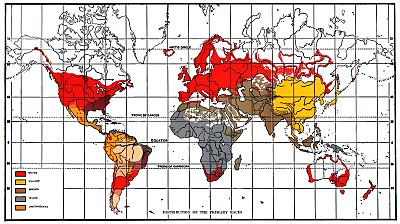The Rising Tide of Color Against White World-Supremacy
 First edition, 1920 | |
| Author | Lothrop Stoddard |
|---|---|
| Country | United States |
| Language | English |
| Subject | Geopolitics, racial theory |
| Publisher | Charles Scribner's Sons |
Publication date | 1920 |
| Media type | |
| Pages | 320 (1st edition) |
| OCLC | 1572150 |
| 323.1 | |
| LC Class | HT1521 .S7 |

The Rising Tide of Color: The Threat Against White World-Supremacy (1920), by Lothrop Stoddard, is a book about racialism and geopolitics, which describes the collapse of white supremacy and colonialism because of the population growth among "people of color", rising nationalism in colonized nations, and industrialization in China and Japan. To counter the perceived geopolitical threat, Stoddard advocated restricting non-white immigration into white-majority countries, by restricting Asian migration to Africa, and slowly giving independence to European colonies in Asia (including the Middle East). A noted eugenicist, Stoddard supported a separation of the "primary races" of the world and warned against miscegenation, the mixing of the races.
Publication and reception[]
In 1920, The Rising Tide of Color Against White World-Supremacy was positively reviewed and recommended by The New York Times: “Lothrop Stoddard evokes a new peril, that of an eventual submersion beneath vast waves of yellow men, brown men, black men and red men, whom the Nordics have hitherto dominated . . . with Bolshevism menacing us on the one hand and race extinction through warfare on the other, many people are not unlikely to give [Stoddard’s book] respectful consideration”.[1]
In 1921, in a speech to a mixed-race audience in Birmingham, Alabama, U.S. President Warren Harding said that Black Americans must have full economic and political rights, but that segregation was also essential to prevent “racial amalgamation” and that social equality was thus a dream that Blacks must give up, and used the book to support his segregationist views: "Whoever will take the time to read and ponder Mr. Lothrop Stoddard’s book on The Rising Tide of Color . . . must realize that our race problem here in the United States is only a phase of a race issue that the whole world confronts."[1]
The anthropologist Franz Boas criticised the scientific racism presented and advocated in The Rising Tide of Color, for which racialist advocacy the black newspapers of the U.S. called Stoddard "the high priest of racial baloney".[1] In the 21st century, the racialism presented by Stoddard remains an ideological influence upon the philosophy and the politics of the white supremacist movement in the United States.[2]
In popular culture[]
In the novel The Great Gatsby (1925), by F. Scott Fitzgerald, to provoke the narrator, Nick Carraway, the antagonist, Tom Buchanan, speaks approvingly of the racialism presented in a recent book: “Civilization’s going to pieces,” broke out Tom violently. “I’ve gotten to be a terrible pessimist about things. Have you read ‘The Rise of the Colored Empires’ by this man Goddard?”[3][4]
See also[]
References[]
- ^ a b c Frazier, Ian (2019-07-26). "When W. E. B. Du Bois Made a Laughingstock of a White Supremacist". The New Yorker. Retrieved 2019-08-30.
- ^ Berlet, Chip; Vysotsky, Stanislav (2006). "Overview of U.S. White Supremacist Groups". Journal of Political and Military Sociology. 34 (1): 14.
- ^ Carter, Stephen (29 May 2015). "What 'Great Gatsby' Can Teach Millennials". Bloomberg.com. Retrieved 5 August 2015.
- ^ Hsu, Hua (January 2009). "The End of White America?". The Atlantic. Retrieved 5 August 2015.
External links[]
- The Rising Tide of Color Against White World-Supremacy (1922 ed.) via Google Books ISBN 4-87187-849-X
- The Rising Tide of Color at Project Gutenberg
- Library of Congress catalog entry
- 1920 non-fiction books
- History of European colonialism
- 1920 in international relations
- Conspiracist media
- English-language books
- Racism
- Scientific racism